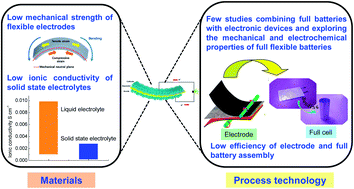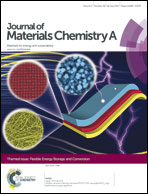Flexible rechargeable lithium ion batteries: advances and challenges in materials and process technologies
Abstract
Flexible batteries possess several unique features including high flexibility, lightweight and easy portability, high specific power and energy density, and remarkable rate capability, etc. So far, many different kinds of flexible batteries have been invented. The batteries, according to the electrochemical processes in a cell, can be categorized as flexible alkaline batteries, plastic batteries (or all-polymer batteries), polymer lithium-metal batteries (with lithium foil as an anode), and flexible rechargeable lithium ion batteries (LIBs), etc. Among these, flexible LIBs attract more rapidly increasing attention. As compared to the conventional rechargeable LIBs, fabrication of flexible LIBs is more challenging. An optimal match among the core components, i.e., nanostructured electrode materials, shape-conformable solid electrolytes, and soft current collectors should be achieved, so that the batteries maintain stable electrochemical performances even though they are deformed to fit the powered devices. Thus, fabrication of such batteries is not cost-effective and hence, is also inefficient. In the search for the potential core components for flexible LIBs, much progress has been made in screening solid state electrolytes, soft current collectors and electrode materials, and in electrode design and full LIB cell assembly (particularly in managing to get the three core components to work harmonically). There are also studies focusing on fundamental understanding and simulation of fully flexible LIBs. They reliably anticipate and describe the battery performances that are not easily explored experimentally using the present state-of-the-art technologies. In this review, we systematically summarize the advances in flexible LIBs research, with focus on the development of flexible electrodes. The review proceeds in terms of the processes for making electrodes and full LIB cells so as to emphasize the materials and process technologies. The development of solid state electrolytes and the fundamental understanding and simulation of flexible LIBs are also addressed. The review concludes with a perspective according to the author's experience in the related field, and the potential application of printing processes in flexible LIB fabrication is especially emphasized.

- This article is part of the themed collections: 10th Anniversary: Dedicated Authors and Flexible energy storage and conversion

 Please wait while we load your content...
Please wait while we load your content...